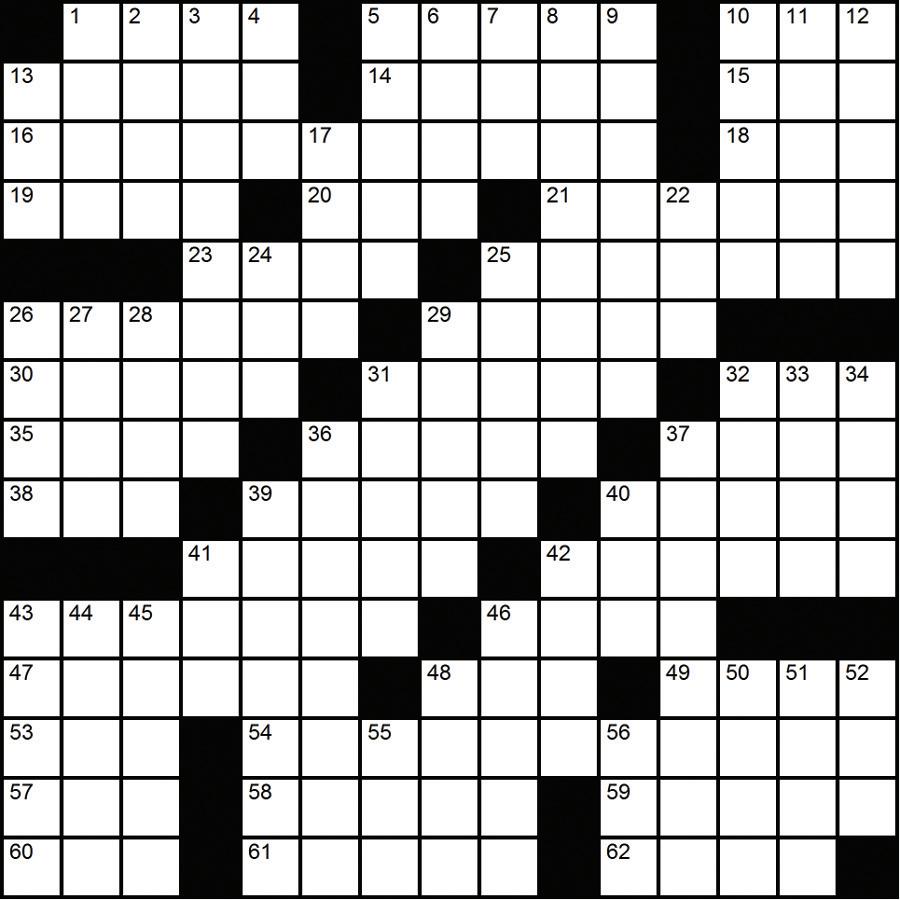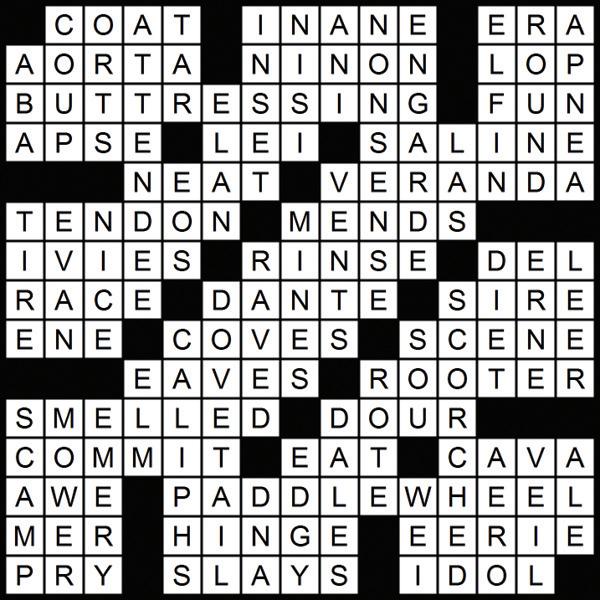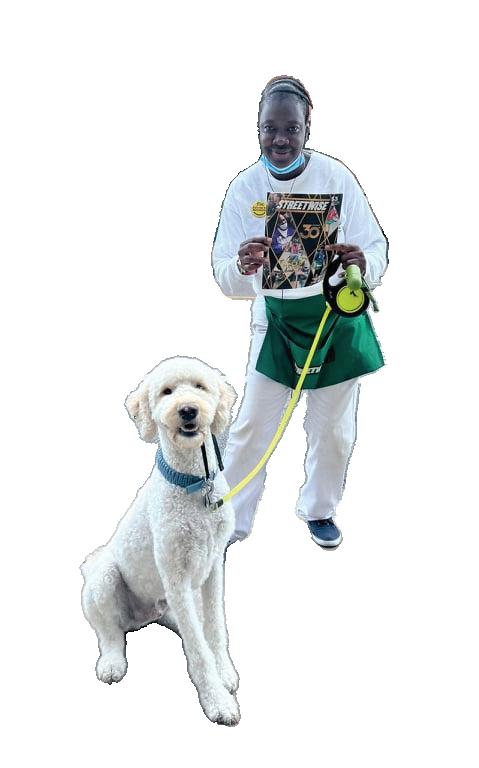
Held to commemorate the lives of our neighbors who were buried by the Office of the Cook County Medical Examiner


Held to commemorate the lives of our neighbors who were buried by the Office of the Cook County Medical Examiner
Wednesday May 22, 2024 12:00 Noon - 1:00 PM 77 West Washington — Chicago
Featuring:
Luciano Antonio, Guitarist
Heitor Garcia, Percussionist
Keynote Speaker
President and Professor of Public Theology for CTS Chicago
Official Greetings from Ms. Toni Preckwinkle President of The Cook County Board of Commissioners
“To live and die alone is a human tragedy, but not to be remembered and mourned after earthly life is an ugly blemish on human dignity.”
W. Earl Lewis (1949-1999) Founder, The Interfaith Memorial Service for Indigent Persons




4 6 7 8 12 15

Arts & Entertainment
Event highlights of the week!
Sportswise
The SportsWise team discusses what it takes to get into the Baseball Hall of Fame.
Healthwise
The importance of colon cancer screening.
Cover Story: Grants pass, oregon v. johnson
People experiencing homelessness in Grants Pass, Oregon say that it is impossible to avoid being punished for having nowhere to live. Now, their case is before the Supreme Court.
The Cook County Bureau of Economic Development partners with nonprofit Skills for Chicagoland's Future to create an accelerator that will identify and screen candidates for manufacturing apprenticeships.
The Chicago Housing Authority (CHA) has launched a community-driven planning process to create new mixedincome housing and economic development in the Near North Side Cabrini Green neighborhood.
Dave Hamilton, Creative Director/Publisher dhamilton@streetwise.org
Suzanne Hanney, Editor-In-Chief suzannestreetwise@yahoo.com
Amanda Jones, Director of programs ajones@streetwise.org
Julie Youngquist, Executive director jyoungquist@streetwise.org
Ph: 773-334-6600
Office: 2009 S. State St., Chicago, IL, 60616
Chicago Mayfest 2024
Chicago Mayfest has been a staple of the community for 27 years, and this year promises to be the best one yet! Every inch of Armitage will be turned into a celebration showcasing local talent and businesses and featuring two stages of the city’s most acclaimed bands and up-and-coming house talent. Indulge your taste buds with mouthwatering bites from your favorite local restaurants, browse through endless paintings and sculptures in the Armitage Art Show, discover unique treasures and one-of-a-kind finds at the artisan market. Mayfest contributes to the vibrant tapestry of the surrounding community, with proceeds benefiting the Ranch Triangle Community Conservation Association, advocating for the betterment of the Lincoln Park community. By attending this event, you’re supporting their efforts to promote small businesses along the Armitage, Halsted and Clybourn shopping areas, improve schools, and grow both existing and new parks in the area. Also, there will be Mayfest Glassblowing Workshops hosted by Ikonic Glass, where you can make your own glass pendant to take home and commemorate this spring celebration. May 17, 5-10 p.m., May 18 noon-10 p.m., and May 19 noon-9 p.m. Entrance at 1000 W. Armitage Ave. FREE.
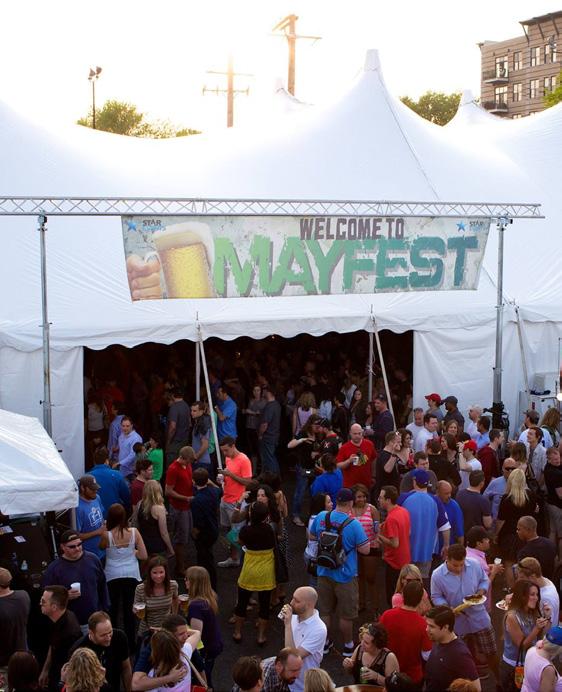
The family favorite, done only as A&A Ballet can, returns to the Chicago stage for the first time in six years. This unique performance and take on the fairy tale is colorful, bright and fun. It features Asian American Tatiana Chen as Cinderella and welcomes A&A Ballet and Joffrey Ballet veteran, Amber Neumann, back as the Stepmother. The pair are supported by a diverse, international cast. The story revolves around a beautiful young girl who is mistreated by her cruel stepmother and jealous stepsisters, who nickname her Cinderella. With the aid of animal friends and the enchantments of a fairy godmother, Cinderella is able to attend a royal ball, where she has until the final stroke of midnight to win the heart of Prince Charming. May 18, 3 p.m., at Athenaeum Center, 2936 N. Southport Ave. Tickets start at $22 at athenaeumcenter.org
‘The Singularity Play’
In an unused room at the Google offices in Manhattan, a theater troupe has gathered to rehearse a new play written by an advanced AI named “Denise.” In an art that relies so substantially upon our human-ness, what does it mean to cede the stage to artificial intelligence? Who are we when reflected by the intelligence we’ve created? Jackalope Theatre Company continues its 16th season at Edgewater’s Berger Park, 6205 N. Sheridan Road, with the world premiere of “The Singularity Play,” May 19 – June 22. Previews are Sunday, May 19; Monday, May 20 and Wednesday, May 22 at 7:30 p.m with the performance schedule: Thursdays – Saturdays at 7:30 p.m. and Sundays at 3 p.m. and Mondays, June 10 and June 17 at 7:30 p.m. The accessibility performance with both audio description and live captioning is Sunday, June 9 at 3 p.m. Tickets are $15 – 35 with student and Edgewater resident discounts available. For more information or tick ets go to JackalopeTheatre.org

The Art Party, A Benefit for the Evanston Art Center
The Evanston Art Center (EAC), a non-profit arts organization, proudly presents its 35th Annual Art Party at 6 p.m. Saturday, May 18 at 1717 Central St. For over 94 years, EAC has provided public outreach programs, exhibitions, and resources for art education. The Art Party is integral to the Evanston Art Center’s success. This yearly tradition includes silent and live auctions to raise money in support of EAC’s mission: fostering the appreciation and expression of the arts among diverse audiences. Last year, over 230 attendees from Chicago and the North Shore raised over $100,000 for outreach, scholarship, and exhibition programs. $250 at https://one.bidpal.net/artparty24/ticketing


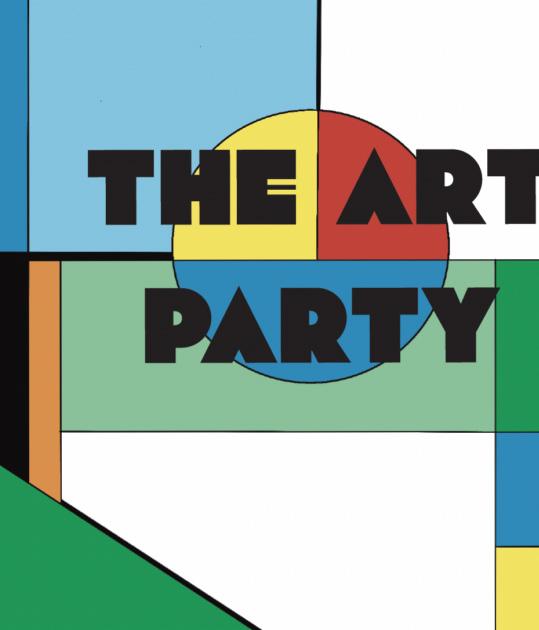



WBEZ Presents: 'Mortified Live - Summer Vacation' Witness personal redemption through public humiliation in a refreshing show that is equal parts comedic, cathartic and voyeuristic. Presented by WBEZ, the performance will be at 8 p.m. May 18 in the Studebaker Theater in the Fine Arts Building, 410 S. Michigan Ave. "Mortified" stars everyday people reading aloud their most embarrassing and private teenage diary entries, poems, love letters, lyrics and locker notes… in front of total strangers. "Mortified" is the largest and longest running project of its kind featuring a cast of Chicago’s bravest souls. Tickets are $39.50 (fees included) at fineartsbuilding.com

Summer50 Fest
Summer50 Fest, hosted by Wards365, brings together city agencies, civic and corporate partners, educational institutions, and community-based organizations to host summer programming enrollment, on-site job applications and placement for teens, job readiness stations, e-gaming clinics, athletic opportunities and more. This is a city-wide festival for youth and families to ensure they can enjoy a safe, productive, and fun summer! May 18, 10 a.m. - 2 p.m. at United Center, 1901 W. Madison St. FREE.


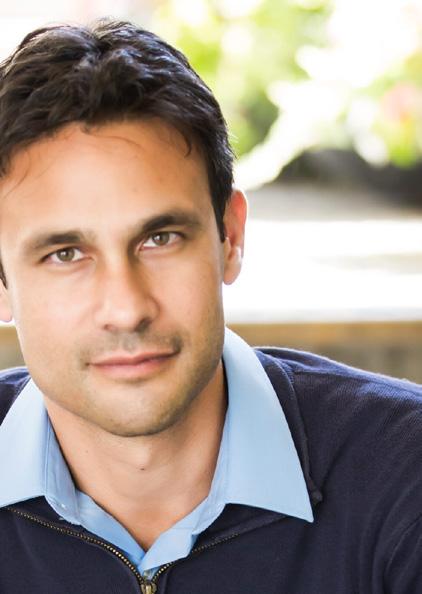

'Rags to Rhinestones: The Musical Life of Dolly Parton'
Marianne Murphy Orland and Girls Like Us bring you the life, stories and music of national treasure and country music icon Dolly Parton. After 7 decades and 25 No. 1 hits, Ms. Parton is still making music and magic as a singer, songwriter, actress, author and philanthropist. Marianne’s port wine voice and special brand of storytelling and humor will bring Dolly’s beloved songs to you in a new and memorable way, with music direction by Beckie Menzie, and sparkling harmonies and repartee of Girls Like Us (Laura Freeman, Beckie Menzie & MMO). Doors open at 6 p.m., show at 7 p.m. at The Promontory, 5311 S. Lake Park Ave. Tickets are $30 at eventbrite.com
Chicago Jazz String Summit
Tomeka Reid’s 10th Annual Chicago Jazz String Summit celebrates string instruments in jazz, improvised, and experimental music with a phenomenal lineup of musicians from Chicago and beyond, including: 8:30 p.m. Dorothy Carlos – solo cello; 9:30 p.m. DoYeon Kim (pictured) – gayageum & Tomas Fujiwara – drums; and 10:30 p.m. Yacouba Sissoko – kora and Moussa Diabate – ngoni. Friday, May 17 at Constellation, 3111 N. Western Ave. $15 at chicagojazzstringsummit.com
Author Talk: Brad Balukjian
Join The Book Stall, 811 Elm St., Winnetka, on Wednesday, May 15 at 6:30 p.m. for an evening of fun and nostalgia with author Brad Balukjian as he discusses his new book, “The Six Pack: On the Open Road in Search of Wrestlemania.” From the bestselling author of “The Wax Pack” comes an eye-opening road trip adventure into the iconic pop culture of professional wrestling, starring the Iron Sheik, Hulk Hogan, Tito Santana, and many more larger-than-life characters of the 1980’s WWF. FREE, but registration is required at thebookstall.com

‘Designing Donkey Hodie’
The Elmhurst Art Museum, 150 S. Cottage Hill Ave., Elmhurst, presents “Designing Donkey Hodie: From MakeBelieve to Someplace Else,” a family-friendly exhibition exploring the visual evolution of the popular PBS KIDS show. Accompanying the exhibition is an exciting calendar of vibrant and accessible programs for children of all ages, including a puppet workshop with the show’s Emmy-nominated cast, and a look behind-the-scenes of the imaginative live-action puppet series. On the museum campus, explore the outdoor public art installation "Monsters in Wilder Park: A Kid-Powered Art Show" by artist and illustrator Dave Pryor, inspired by monster drawings by over 300 local children. From May 18 to August 12. More info at www.elmhurstartmuseum.org

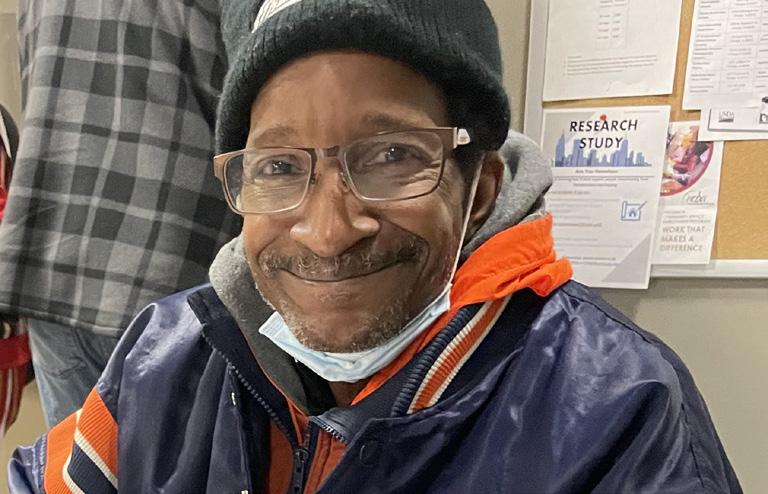
John: There have been 323 no-hitters in Major League Baseball, but only 37 of those pitchers have made it into the Major League Baseball Hall of Fame. Now the old myth was if you pitched a no-hitter, you'd be in the Hall of Fame. But there’s another body of work you got to do to achieve it.
Part 2 is Kenny Holtzman, who recently passed April 14. He was born in St. Louis, Missouri on Nov. 3, 1945, and had a lifetime win-loss record of 174 and 150. His ERA (Earned Run Average) was 3.49 and he had 1,601 strikeouts. He had two no-hitters, both for the Cubs. He played for the Cubs twice, in 1965 through 1971 and again to end his career in 1978 and 79. In between he made three other stops. He was part of the Oakland A's championship dynasty from 1972 through 1975, the Baltimore Orioles briefly in 1976 and the New York Yankees before he returned to the Cubs.
So, do you believe that pitching no hitters should get you in the Hall of Fame, Donald?
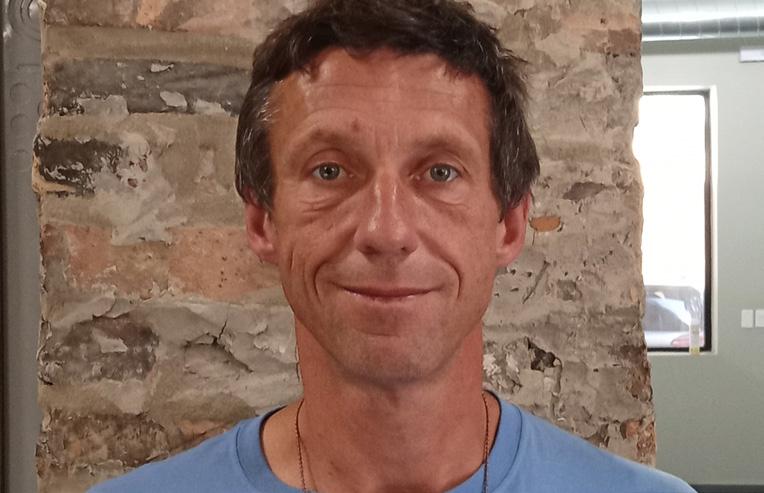
Donald: Yes, I do. I also believe that pitchers not only strike out the other team, but they help win the game and win the series in playoffs and the regular season.
Russell: I don't think you deserve to go to the Hall of Fame if you throw a no-hitter. That might be all you do. You got to have some more stats too. Kenny Holtzman definitely deserves to go to the Hall of Fame. The man got two no-hitters, 100-some wins. That’s pretty good. The second no-hitter was in Reds stadium; their fans were like, ‘You’re not going to throw a no-hitter in our stadium.’ He just shut it out and took care of business.
Allen: Well, not just for one no-heater. But I was looking at this guy, Larry Corcoran from the White Sox. He pitched three: in 1880, 1882, then another in 1884. That shows a little consistency when you can pitch three

no-hitters within 10 years. The White Sox pitched 20 no-hitters in their history. That’s why I look to them to do something great this year.
Russell: Yeah, last place!
John: Mike Wood had a couple of no-hitters, so did Bob Forsch of the St. Louis Cardinals and Kenny Holtzman. The problem is, none of them got to 300 wins. Kenny Holtzman didn't even get to 200 wins and his ERA for starting pitcher at 3.49 is not totally high but not unbelievable greatness either. The criteria for a batter is 3000 hits or 500 home runs and the criterion for a pitcher is 300 wins. Kenny Holtzman is only 174. The consistency is not there. Maybe if he had had a few more good years in Oakland.
Donald: Let's look at the Cubs’ Rick Sutcliffe.
John: He had a couple good
years. I’d have to look at his stats: (171-139 W/L, 4.08 ERA).
Russell: Compare him to Sandy Koufax of the Brooklyn/ Los Angeles Dodgers. He had way more wins than Koufax did (165-87 W/L, 2.76 ERA, four no-hitters). One more thing. The best pitcher ever: Nolan Ryan, seven no-hitters (324-292 W/L, 3.19 ERA). And the Cubs’ Milt Pappas back in the day, [1972] a nohitter and an almost-perfect game, except for the ump calling ball four on what Pappas said was a strike.
Allen: Pitchers are really the key to a ballgame because they're like the temperature gauge of the game. If you have a good pitcher, you can get the crowd into it.
Any comments, suggestions or topic ideas for the SportsWise team? Email StreetWise Editor Suzanne Hanney at suzannestreetwise@yahoo.com
Not including skin cancers, colon cancer is the third most common cancer diagnosed in both men and women in the United States. Recommendations for screening changed in 2021. Here’s what you need to know:
The U.S. Preventive Services Task Force recommends that adults age 45 to 75 be screened for colorectal cancer. The recommended age to start screening used to be 50. The decision to be screened for those ages 76 to 85 should be made by talking to your doctor. People at an increased risk of getting colorectal cancer should talk to their doctor about when to begin screening, which test is right for them, and how often to get tested.
Risk factors for colon cancer include: • Inflammatory bowel disease • A personal or family history of colorectal polyps or cancer • A genetic syndrome called familial adenomatous polyposis (FAP) or Lynch Syndrome
Other factors that may increase risk include: • Lack of regular physical activity • Diet low in fruits and vegetables • Low fiber/high fat diet • Diet high in processed meats • Overweight/obesity • Alcohol use • Tobacco use
Several screening tests can be used to find polyps or colorectal cancer. A polyp is a clump of cells that forms on the lining of the colon. While most polyps are harmless, some may develop into colon cancer.
It is important to know that if your test result is positive or abnormal on some screening tests, a colonoscopy is needed to complete the screening process. Talk to your doctor about which test is right for you.
Stool Tests
There are several types of tests [guaiac fecal occult blood test (gFOBT), fecal immunochemical test (FIT), and stool DNA test that can be done at home. You return the test kit to the doctor or a lab, where the stool samples are checked for the presence of blood. How often: Depending on the test, it is typically done once a year or less often.
Flexible Sigmoidoscopy
The doctor puts a short, thin, flexible, lighted tube into your rectum. The doctor checks for polyps or cancer inside the rectum and lower third of the colon.
How often: Every 5 years if the test is negative, or every 10 years with a FIT every year.


Colonoscopy
The doctor uses a long, thin, flexible, lighted tube to check for polyps or cancer inside the rectum and the entire colon. During the test, the doctor can find and remove most polyps and some cancers. A colonoscopy is also used as a follow-up test if anything unusual is found during one of the other screening tests.
How often: Every 10 years (for people who do not have an increased risk of colorectal cancer).
CT Colonography (Virtual Colonoscopy)
This test uses X-rays and computers to produce pictures of the entire colon, which are shown on a computer screen for the doctor to analyze.
How often: Every 5 years.
How Do I Know Which Screening Test Is Right for Me?
Talk to your doctor about the pros and cons of each test and how often you should be tested.
References: www.cdc.gov/cancer/colorectal/basic_info/screening/ tests.htm uspreventiveservicestaskforce.org
Dr. Marina Claudio is a board-certified family physician who has been in practice since 2003. She is currently a Medical Director at Molina Healthcare of Illinois/Wisconsin. She's a graduate of the University of Illinois College of Medicine at Chicago and completed her residency in Family Medicine at the UIC/Advocate Illinois Masonic Family Medicine Residency Program.
On April 22, the Supreme Court heard a case that could radically change how cities respond to the growing problem of homelessness. A decision is expected in June. It also could significantly worsen the nation’s racial justice gap.
City of Grants Pass v. Johnson began when a small city in Oregon with just one homeless shelter began enforcing a local anti-camping law against people sleeping in public using a blanket or any other rudimentary protection against the elements – even if they had nowhere else to go. The court must now decide whether it is unconstitutional to punish homeless people for doing in public things that are necessary to survive, such as sleeping, when there is no option to do these acts in private.
The case raises important questions about the scope of the Constitution’s cruel and unusual punishment clause and the limits of cities’ power to punish involuntary conduct. As a specialist in poverty law, civil rights and access to justice who has litigated many cases in this area, I know that homelessness in the U.S. is a function of poverty, not criminality, and is strongly correlated with racial inequality. In my view, if cities get a green light to continue criminalizing inevitable behaviors, these disparities can only increase.
Homelessness in the United States is a massive problem. The number of people without homes held steady during the COVID-19 pandemic largely because of eviction moratoriums and the temporary availability of expanded public benefits, but it has risen sharply since 2022.
The latest data from the federal government’s annual “Pointin-Time” homeless count found 653,000 people homeless across the U.S. on a single night in 2023 – a 12% increase from 2022 and the highest number reported since the counts began in 2007. Of the people counted, nearly 300,000 were living on the street or in parks, rather than indoors in temporary shelters or safe havens.
The survey also shows that all homelessness is not the same. About 22% of homeless people are deemed chronically homeless, meaning they are without shelter for a year or more, while most experience a temporary or episodic lack of shelter. A 2021 study found that 53% of homeless shelter residents and nearly half of unsheltered people were employed.
Scholars and policymakers have spent many years analyzing the causes of homelessness. They include wage stagnation, shrinking public benefits, inadequate treatment for mental illness and addiction, and the politics of siting affordable housing. There is little disagreement, however, that the simple mismatch between the vast need for affordable housing and the limited supply is a central cause.
Like poverty, homelessness in the U.S. is not race-neutral. Black Americans represent 13% of the population but comprise 21% of people living in poverty and 37% of people experiencing homelessness.
The largest percentage increase in homelessness for any racial group in 2023 was 40% among Asians and Asian-Americans. The largest numerical increase was among people identifying as what the Department of Housing and Urban Development calls “Latin(a)(o)(x),” with nearly 40,000 more homeless in 2023 than in 2022.
This disproportionality means that criminalizing homelessness likewise has a disparate racial effect. A 2020 study in Austin, Texas, showed that Black homeless people were 10 times more likely than white homeless people to be cited by police for camping on public property.
According to a recent report from the Southern Poverty Law Center, 1 in 8 Atlanta city jail bookings in 2022 were of people experiencing homelessness. The criminalization of homelessness has roots in historical use of vagrancy and loitering laws against Black Americans dating back to the 19th century.

Increasing homelessness, especially its visible manifestations such as tent encampments, has frustrated city residents, businesses and policymakers across the U.S. and led to an increase in crackdowns against homeless people. Reports from the National Homelessness Law Center in 2019 and 2021 have tallied hundreds of laws restricting camping, sleeping, sitting, lying down, panhandling and loitering in public.
Just since 2022, Texas, Tennessee and Missouri have passed statewide bans on camping on public property, with Tennessee making it a felony.
Georgia has enacted a law requiring localities to enforce public camping bans. Even some cities led by Democrats, including San Diego and Portland, Oregon, have established tougher anti-camping regulations.
Under presidents Barack Obama and Joe Biden, the federal government has asserted that criminal sanctions are rarely useful. Instead it has emphasized alternatives, such as supportive services, specialty courts and coordinated systems of care, along with increased housing supply.
Some cities have had striking success with these measures. But not all communities are on board.
Grants Pass v. Johnson culminates years of struggle over how far cities can go to discourage homeless people from residing within their borders, and whether or when criminal sanctions for actions such as sleeping in public are permissible.
In a 2019 case, Martin v. City of Boise, the 9th U.S. Circuit Court of Appeals held that the Eighth Amendment’s cruel and unusual punishment clause forbids criminalizing sleeping in public when a person has no private place to sleep.
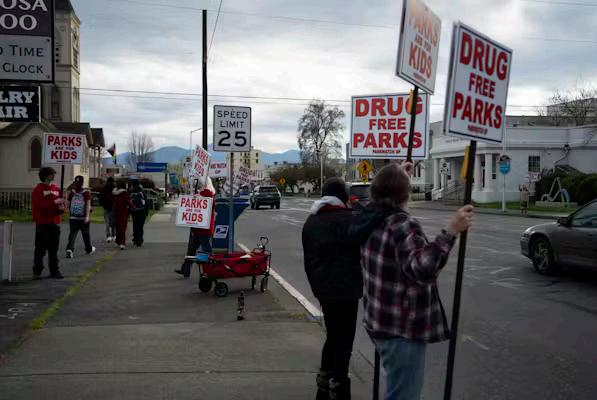
The decision was based on a 1962 Supreme Court case, Robinson v. California, which held that it is unconstitutional to criminalize being a drug addict. Robinson and a subsequent case, Powell v. Texas, have come to stand for distinguishing between status, which cannot constitutionally be punished, and conduct, which can.
In the Grants Pass ruling, the 9th Circuit went one step further than it had in the Boise case and held that the Constitution also banned criminalizing the act of public sleeping with rudimentary protection from the elements. The decision was contentious: judges disagreed over whether the anti-camping ban regulated conduct or the status of being homeless, which inevitably leads to sleeping outside when there is no alternative.
Grants Pass is urging the Supreme Court to abandon the Robinson precedent and its progeny as “moribund and misguided.” It argues that the Eighth Amendment forbids only certain cruel methods of punishment, which do not include fines and jail terms.
The homeless plaintiffs argue that they do not challenge reasonable regulation of the time and place of outdoor sleeping, the city’s ability to limit the size or location of homeless groups or encampments, or the legitimacy of punishing

Page 9: Top: Homeless residents in Grants Pass shelter in tents in parks, including Morrison Park, despite the threat of civil and criminal penalties (Street Roots photo). Bottom: Members of a local "park watch" group demonstrate against homeless encampments in Grants Pass, OR, March 20 (AP Photo/Jenny Kane). Page 10: Top: Helen Cruz has been repeatedly fined for sleeping in Grants Pass, despite having no other place to go. Between house cleaning jobs, Cruz delivers 100 food boxes once a week to people in parks. Bottom: Local Grants Pass organization MINT provides mobile medical care to people living in local parks and opened a small emergency shelter in early 2024 (Both photos Street Roots). Page 11: Rally For Housing Not Handcuffs on April 22 in Washington D.C. (Alexandra Charitan photo/Housing Not Handcuffs).
those who insist on remaining in public when shelter is available. But they argue that broad anti-camping laws inflict overly harsh punishments for “wholly innocent, universally unavoidable behavior” and that punishing people for “simply existing outside without access to shelter” will not reduce this activity.
They contend that criminalizing sleeping in public when there is no alternative violates the Eighth Amendment in three ways: by criminalizing the “status” of homelessness, by imposing disproportionate punishment on innocent and unavoidable acts, and by imposing punishment without a legitimate deterrent or rehabilitative goal.
The case has attracted dozens of amicus (friend) briefs, including from numerous cities and counties that support Grants Pass. They assert that the 9th Circuit’s recent decisions have worsened homelessness, stymied law enforcement and left jurisdictions without clear guidelines for preserving public order and safety.
On the other hand, the states of Maryland, Illinois, Massachusetts, Minnesota, New York and Vermont filed a brief urging the Court to uphold the 9th Circuit’s ruling, arguing that local governments retain ample tools to address homelessness and that criminalizing tends to worsen rather than alleviate the problem.


A brief from 165 former local elected officials agrees. Service providers, social scientists and professional organizations such as the American Psychiatric Association filed briefs noting that criminalization increases barriers to education, employment and eventual recovery; erodes community trust; and can force people back into abusive situations. They also highlight research showing the effectiveness of a nonpunitive “housing first” model.
The current Supreme Court is generally extremely sympathetic to law enforcement, but even its conservative members may balk at allowing a city to criminalize inevitable acts by homeless people. Doing so could spark competition among cities to create the most punitive regime in hopes of effectively banishing homeless residents.
Still, at least some justices may sympathize with the city’s argument that upholding the 9th Circuit’s ruling “logically would immunize numerous other purportedly involuntary acts from prosecution, such as drug use by addicts, public intoxication by alcoholics, and possession of child pornography by pedophiles.” However the court rules, this case will likely affect the health and welfare of thousands of people experiencing homelessness in cities across the U.S.
Clare Pastore is Professor of the Practice of Law at the University of Southern California. Courtesy of The Conversation.


If the U.S. Supreme Court rules that it is OK to criminally punish unhoused people when there are no available shelters and they use a blanket to stay warm while they sleep, “it would be a major step backward – to a society less caring and more medieval,” Chicago legal advocates say.
The U.S. Supreme Court heard oral arguments April 22 in City of Grants Pass, Oregon v. Johnson, focused on whether enforcing laws regarding camping on public property constitutes “cruel and unusual punishment,” prohibited by the Eighth Amendment. A decision is expected to be handed down in late June.

“The measure of a society is how it treats its most vulnerable,” wrote Steven Blonder, principal at pro bono law firm Much Shelist, in a friend of the court, “amicus” brief written to the Supreme Court. The amicus brief was written for the Chicago Coalition for the Homeless (CCH) and 27 other statewide organizations.
“It demonstrates the character and compassion of the citizenry, and our country has made significant advances in the care and sheltering of those experiencing homelessness,” wrote Blonder, who was assisted by attorneys Josh Leavitt and Charlotte Franklin in drafting the brief. Amicus partners included AIDS Foundation Chicago, All Chicago Making Homelessness History, Chicago Urban League, Chicago Women Take Action, Covenant House Illinois, Deborah’s Place, Law Center for Better Housing, The Night Ministry and Thresholds.
CCH joins the National Homelessness Law Center and hundreds of other organizations, which have submitted 39 amicus briefs to the Court in support of people experiencing homelessness.
Conversely, the city and county of San Francisco, as well as local and state governments, police departments and chambers of commerce across the West, submitted amicus briefs in support of the city of Grants Pass, according to StreetRoots of Portland, Oregon. Like StreetWise, StreetRoots is a member of the International Network of Street Papers and is sold by people as an alternative to panhandling.
“The homelessness crisis defies ready solutions,” according to the San Francisco brief. “By restricting San Francisco’s ability to enforce those laws, judicial intervention has thwarted both the city’s ability to provide services to persons experiencing homelessness and its ability to protect the health, safety, and welfare needs of its residents as a whole.”
Grants Pass is a city of 38,000 people whose 50 to 600 homeless people outnumber the available shelter beds, giving them nowhere to sleep but the park. City ordinances say the people cannot use a blanket, pillow, or cardboard box as protection from the elements within the city limits.
However, the Ninth Circuit Court of Appeals, based in San Francisco, ruled previously that when a city has nowhere else for homeless people to go, the city cannot prosecute them and prevent them from “taking necessary minimal measures to keep themselves warm and dry while sleeping.”
If the Supreme Court were to reverse that decision, it would be condoning cruel and unusual punishment, the Chicago lawyers wrote. A homeless person – in Oregon or Chicago – could freeze to death without a blanket. “In January 2019, Chicago experienced colder temperatures than are recorded in regions of Siberia, the Arctic, or Mars.”
Between 2011 and 2018, Illinois hospitals identified 1,935 cold-related deaths and 23,834 cold injuries, according to the brief. Frostbite can occur in three to 10 minutes, depending on age, exposure, alcohol consumption and whether the person is wearing wet socks or gloves.
Like Grants Pass, Chicago is unable to provide housing for all its people who are homeless, according to the CCH brief. In January 2023, Chicago provided 8,360 beds of permanent supportive housing, that is, non-limited affordable housing; and 2,099 beds of rapid rehousing, which is rental assistance and supportive services for up to 24 months to give people a fresh start.
However, to meet the demand here, Chicago needs an additional 2,637 permanent supportive housing units and 3,851 rapid rehousing units.
Chicago’s 50 shelters would be equally unable to meet the demand, just like the single shelter in Grants Pass, which requires clients to abstain from using substances, to attend daily Christian services and to abide by numerous other rules. There are an estimated 3,000 to 5,000 shelter beds in Chicago on a given night. However, 11,767 Chicagoans were homeless on a given day in 2023.
Forcing people to pay fines or serve jail time, the Chicago lawyers noted, “makes obtaining housing more difficult and causes their health to decline.”
Grants Pass requires people living in parks to move every 72 hours, according to Street Roots. Every Monday and Thursday, police officers hand out 72-hour eviction notices and $295 citations for “scattering rubbish,” a loosely defined term for any item officers find near a tent. Every Saturday, the local organization Mobile Integrative Navigation Team, or MINT, offers to help residents move their tents. MINT began as a community project with Josephine County Public Health, providing vaccines to homeless residents in 2021.
The Grants Pass municipal code says that if a person receives two or more citations in a year for violating park rules, officers can bar them from the park for 30 days under threat of criminal trespass. A criminal trespass conviction can mean up to 30 days in jail and a $1,250 fine.
Within a matter of three weeks, Helen Cruz and her partner each received $295 citations for violating park use regulations, two separate $295 citations for camping in parks, then an exclusion order kicking them out of Morrison Park in Grants Pass. Brodia Minter, their public defender, said court scheduling made it impossible for Cruz to have her day in court on the initial citations before officers issued the exclusion order; her right to due process was violated.
“We'd tried to adjudicate them, but she was getting an exclusion order and swept before those tickets were adjudicated,” Minter said. “There was literally nothing she could ever do to be doing it right.”
Cruz, who cleans houses for a living, lost everything in the sweep. Police dumped an ice chest onto sentimental photos and important documents and her blankets were soaked, she said. She couldn’t put up her tent again because the police intentionally broke the tent poles.
“Everything was just destroyed,” Cruz said. “It took my self-esteem and … just stomped on it basically.”– Suzanne Hanney, from prepared materials
Cook County Board President Toni Preckwinkle announced the launch of the Cook County Manufacturing Apprenticeship Accelerator program April 30 as a “concierge service” to identify and screen candidates for vacant U.S. Department of Labor (DOL)-registered apprenticeships.
“As the name suggests, this program will accelerate talent acquisition for manufacturers and accelerate career pathways for individuals seeking a career in manufacturing – a win-win situation for all,” Preckwinkle said. “We’re grateful to Skills for Chicagoland’s Future for their experience and partnership."
The Cook County Bureau of Economic Development (BED) created the Manufacturing Apprenticeship Accelerator and partnered with Skills for Chicagoland’s Future, a Chicago nonprofit that has worked with over 120 employer partners spanning manufacturing, healthcare and finance and placed over 12,000 candidates in jobs over the last 11 years.
As a part of the “earn and learn model,” Skills for Chicagoland's Future will work directly with employers to meet their talent needs and will provide supportive services to apprentices during their first 90 days of employment. These services include career counseling, transportation assistance, professional attire and referrals for childcare. Employers and interested candidates can visit https://sfcf.my.salesforcesites.com/apprenticeship?utm_medium=email&utm_ source=govdelivery.
The Manufacturing Apprenticeship Accelerator is funded through $810,000 that Cook County received through the American Rescue Plan Act. The program will run through April 2026.
“Skills for Chicagoland’s Future is thrilled to be working with Cook County to help overlooked talent connect with employers so they can pursue careers that lead to economic stability and mobility,” said Pam Tully, president and chief operating officer at Skills for Chicagoland’s Future.
Tom Simeone, president of Manor Tool and Manufacturing Company in Schiller Park, said that apprenticeships are vital for manufacturing.
“Hands down, apprenticeships represent the best way to pass on the acquired knowledge of working trade
professionals with 30 years of experience to the next generation of workers,” Simeone said. “All companies in manufacturing should actively take part in training apprentices to guarantee a good future for their companies and our industry.”
The Manufacturing Apprenticeship Accelerator will also connect local manufacturers with Jobs for the Future (JFF), a national nonprofit. The U.S. Department of Labor’s Office of Apprenticeship selected JFF as a national apprenticeship intermediary to drive and accelerate the expansion of registered apprenticeships in advanced manufacturing.
JFF offers manufacturers free coaching, technical assistance and incentive funding to build a diverse, skilled pipeline of workers for careers in advanced manufacturing.
The Manufacturing Apprenticeship Accelerator will complement a broad array of programs that Cook County Government is supporting. The county groups its manufacturing programs under the moniker of M3—which stands for Metro, Manufacturing, Momentum and works to support and unite the region’s manufacturing ecosystem.
For more information, visit https://www.cookcountyil.gov/agency/ bureau-economicdevelopment?utm_ medium=email&utm_ source=govdelivery – Suzanne Hanney, from prepared materials

The Chicago Housing Authority (CHA) has launched “Cabrini Now,” a community-driven planning and design process to accelerate new mixed-income housing and economic development in the Near North neighborhood. A key goal is to respond to current and future affordable housing needs of the neighborhood and Chicago.
Cabrini Now is the first in a series of CHA updated community planning initiatives; it builds on a 2015 development zone plan to update the community’s vision for the neighborhood. A planning initiative around the State Street Corridor is scheduled to begin later this year.
“Cabrini, like Chicago as a whole, has continued changing since 2015. How the neighborhood looks and feels is fundamentally shifting with rising housing costs and significant new developments like the Bally’s casino, Lincoln Yards and North Union,” said CHA CEO Tracey Scott. “CHA recognizes that it’s critically important for us to hear from community residents throughout this process. By proactively updating our plans for our large sites, we are laying the groundwork for more affordable housing construction.”
CHA has already begun to consult key stakeholders and CHA residents in what officials say is designed to be an equitable process. Cabrini Now kicked off May 8 with the first of multiple public engagement meetings. The kickoff celebration and future meetings will include specific opportunities for children and youth to contribute their views too.
Cabrini Now will create development concepts for specific sites and for the remaining CHA land in the Cabrini neighborhood as well as development concepts for
specific sites, including the vacant Cabrini Row Homes. The plan is expected to be released by the end of 2024.
CHA has retained planning and architecture firm Solomon Cordwell Buenz to lead this process. The project team is using the latest principles for building complete communities such as the 15-minute city concept popularized in Paris, and lessons from recent decades of community planning in Chicago.
Since 2005, CHA’s investments have resulted in more than 2,900 new homes in Cabrini, including almost 1,000 CHAsubsidized apartments. In addition to the Cabrini Now planning efforts, CHA also has three active development initiatives there:
• Oak & Larrabee (78 total homes, including 37 public housing units and 17 affordable rental units)
• Parkside 5 (99 total homes, including 37 public housing units and 28 affordable rental units
• Clybourn & Larrabee (first phase under detailed design and development)
More information about Cabrini Now is available at thecha.org/cabrininow. CHA is the third largest public housing authority in the nation and the largest single owner of rental housing in Chicago. Through its public housing and voucher programs, CHA serves 135,000 people in 65,000 households across all 77 Chicago community areas.
– Suzanne Hanney, from prepared materials

